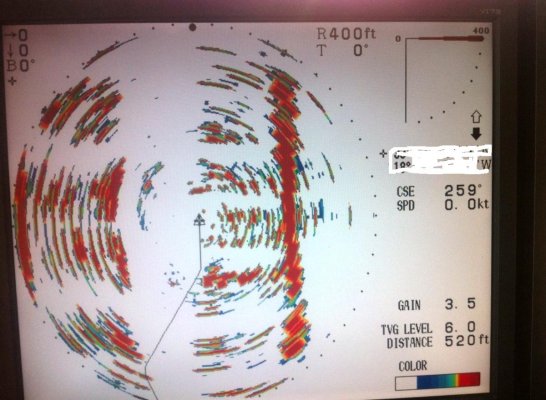My buddy's Garmin installation was Panoptix. I would agree that the "demo" display makes the unit appear to have capabilities comparable to, or better than, the CH250. Maybe that demo was photo shopped, or at least carefully selected because from what I have been able to see the real world performance doesn't come close in terms of sensitivity, target separation, persistence or range (the CH250 has an effective range of over 5,000 feet, though I rarely go above 1,200 feet).
The major benefits of Garmin/Panoptix, in my experience are:
1) the graphical representation is much easier for those with limited spatial intelligence. Some people just can't seem to understand what my CH250 is showing them while the Garmin gives a 2D picture (complete with boat) that can be easily manipulated to show different perspectives with the result that the 3D aspect becomes intuitively obvious; and
2) the CH250 has lots of interdependent parameters to set. It takes a while to learn to "tune" the display. Conversely, the Garmin automatically sets most of those parameters; and
3) the transducer does not need to be deployed or retracted, which is hugely convenient for anyone who routinely exceeds 14 knots.

